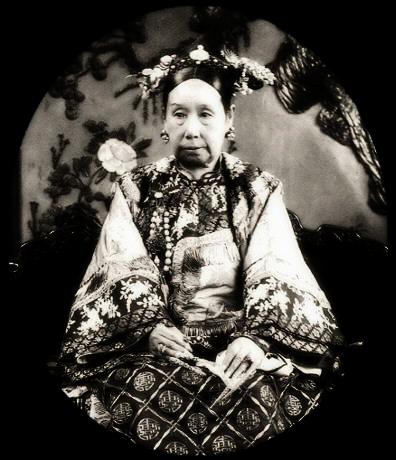
Empress Dowager Cixi
| Name | Empress Dowager Cixi |
| Title | Chinese empress (1835–1908) |
| Gender | Female |
| Birthday | 1835-11-29 |
| nationality | Qing dynasty |
| Source | https://www.wikidata.org/wiki/Q47842 |
| pptrace | View Family Tree |
| LastUpdate | 2025-10-27T03:40:04.611Z |
Introduction
Empress Dowager Cixi (Chinese: 慈禧太后; Mandarin pronunciation: [tsʰɹ̩̌.ɕì]; 29 November 1835 – 15 November 1908) was a Manchu noblewoman of the Yehe Nara clan. She held de facto control of the Chinese government in the late Qing dynasty, serving as empress dowager and regent for nearly fifty years, from 1861 until her death in 1908.
Born on 29 November 1835, Cixi was the daughter of Huizheng, a member of the Bordered Blue Banner who held the title of third-class duke. Her childhood home was located in Pichai Hutong, Xisipailou, Beijing. She had a sister named Wanzhen and a brother named Guixiang. In 1851, she participated in the selection process for the emperor’s consorts alongside sixty other candidates and was chosen to remain among the imperial harem. She was initially granted the title "Noble Lady Lan" (兰贵人) upon entry into the Forbidden City in June 1852.
By 1854, she was elevated to "Concubine Yi," and in 1856, she gave birth to Xianfeng Emperor’s only surviving son, Zaichun, who was enthroned as the Tongzhi Emperor in 1861. Following the emperor’s death in 1861, her young son ascended the throne at age five, prompting her to assume the roles of co-empress dowager alongside Empress Dowager Ci'an. Cixi quickly consolidated power by ousting the regents appointed by the late emperor, establishing her influence over the court.
During her regency, Cixi supervised the Tongzhi Restoration, implementing moderate reforms aimed at stabilizing the Qing dynasty amidst internal chaos and external threats. She endorsed technological and military advancements through the Self-Strengthening Movement and supported principles of the Hundred Days' Reforms in 1898. However, she opposed radical changes, fearing that rapid reforms could invite foreign dominance or chaos. When reformers supported the Guangxu Emperor’s efforts for modernization, Cixi placed him under house arrest and publicly executed key reformers.
She initially supported the Boxer Rebellion and declared war on the invading Allied forces following the uprising’s suppression. The defeat resulted in the occupation of Beijing and a humiliating treaty. Subsequently, Cixi reversed her stance, returning to implement fiscal and constitutional reforms to modernize China, including the abolition of the examination system in 1905. She also installed the child Puyi as emperor shortly before her death.
Cixi died on 15 November 1908, shortly after the death of Guangxu. Her remains were interred at the Eastern Qing Tombs in the Eastern Ding Mausoleum. She was posthumously honored with titles including Dame Grand Cordon of the Order of the Precious Crown of Japan and Dame Grand Cross of the Order of Saint Catherine of Russia.
Her family included her father Huizheng, her younger brother Guixiang, and her sister Wanzhen, the mother of the Guangxu Emperor. Her only issued son was Zaichun, the Tongzhi Emperor.
Cixi has been depicted variously in historical accounts and cultural productions, with her legacy subject to debate among scholars. Historically portrayed as a reactionary ruler responsible for the decline of Qing China, revisionist perspectives have highlighted her efforts toward moderate reform and stability during a period of widespread upheaval.
Family Tree
Tap to expand more relatives